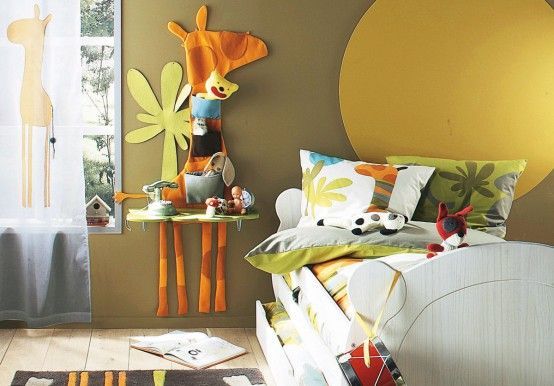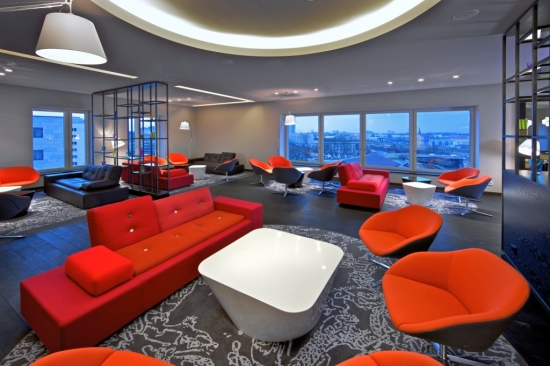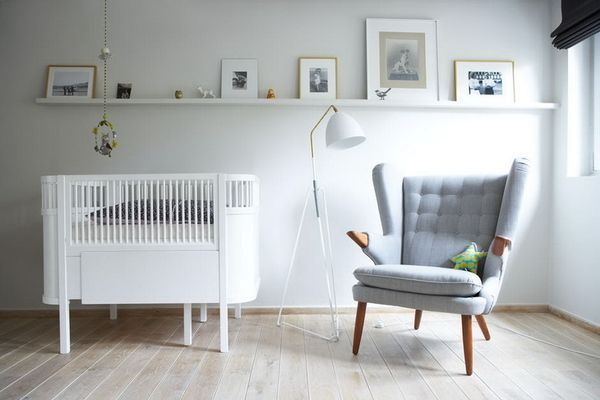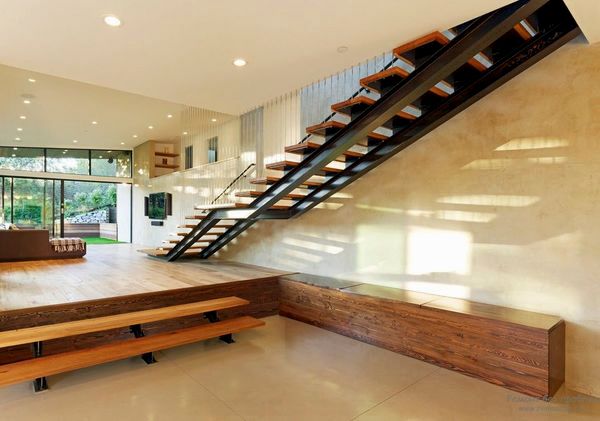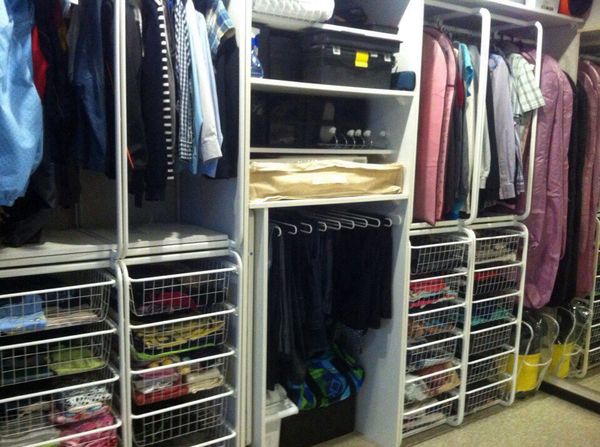Insulate Balcony and Loggia with Your HandsA loggia and a balcony ― are a few extra square yards for the relatively small apartment. Few people use them just to breathe fresh air and admire the sunset. For some people it is a place of a storage of vegetables, for some, a flowerbed, or a small kitchen garden, for some − a study room. However, if the vegetables can be somehow or other kept wrapped in the old junk on the balcony in the winter, there are nothing to do there for the flowers and the man. That is why the balconies are longed warm too. Features and Preparatory Work
The degree of insulation depends on what for you will use the balcony or loggia. That is, for food storage it will be enough one layer of thermal insulation, for other house needs - two or more. If the balcony parapet is metal, its insulation is generally not done because its basis is built of foam concrete blocks or pure concrete. Also, under the thermal insulation should not accumulate water vapors: otherwise, the warm home air colliding with the cold one from the street in some places will form a condensate. If you do not put a vapor insulator, the wall will be damping and in winter quickly fall into disrepair. You must remember that the balcony needs more warmth-keeping than the loggia: after all, the balcony - is the box design with three sides exposed to the winds, while, at least, two walls of the loggia receive heat from the walls of the apartment. The loggias wall, adjacent to the apartments, are often not warmed. Warming of Floor of Balcony or LoggiaJust need to mention that the floor warming can be passive and active. With the passive one, owners limited only to laying of the thermal insulation materials. Active warming − is the so-called "warm floor" or heated water circulating through pipes, or the flexible electrical cables with tubular heating elements. The main insulating materials, used for warming of the balconies: - penofol (foil-cladded polyethylene);
Creating a hot-water heating for the floor from the home heating system is problematic, but the installation of electrical heating with your own hands special difficulties will not cause. The most important thing is to follow the instructions, which is attached to the tubular electric heating element. In general, it looks like this: - place the heater (which is explained in the instructions) on the floor of the balcony on the glue; Warming is included after the complete curing of the screed. Insulation of Ceiling
A form of the insulator for the ceiling does not matter − his choice will depend on how to ceil the ceiling. For example, suspended ceilings and ceiling beneath the putty are warmed with the styrofoam and the mineral wool, but the last is not used for the ceilings beneath putty. The penoplex is for as the beneath putty so the suspended ceilings. The polystyrene is two times lighter than the styrofoam, and at the ends it has as if a selected quarter. This allows mounting sheets by two dowels (against five for polystyrene). In cases where the insulation will be beneath putty, it is attached with dowels or glued and then additionally fixed with dowels. If the finish is to be hinged, it is possible to insert insulator between the ceiling and the trim, filling the voids with foam. Wall Insulation of Balconies and Loggias
The selected at the ends the sheets of polystyrene quarter allows you to establish connection "warm the seam". Dimensions of the balconies are different, sometimes it is not possible to connect the sheets with such method; then the sheets are fastened in a joint and then filling the joints with foam. The polystyrenes fastened with dowels to the wall. When pinned all sheets, all the seams are glued, without exception, by a simple scotch. Now comes the time of the polyethylene foil. In addition to vapor, it perfectly reflects the warmth and sounds. It is sold in the rolls so you need to roll them out and cut into the desired pieces. These pieces are glued to the polystyrene with double-sided scotch. Then, the seams of vapor insulation are glued by foiled tape. More carefully than other walls it is necessary to warm the parapet, it will be the most cold, as one side of it is on the street. This is a place where in any case it must be prevented the appearance of "cold bridges". Therefore, is not suitable as metal fasteners, and the laying the insulation between the bars (in this case the role of "bridges" will play bars). We recommend the use of the sheets of polystyrene quarter. We are also advising to make sure did not match the seams of the two layers of insulation; the top layer must overlap the seams of the bottom layer. Do not expect that with the arrival of cold weather it gets hot by itself in the warmed balcony. Much warmer will be only in the combined balcony or loggia; however, it will be cooler in the room. It is worth remembering that there was only the passive warmth-keeping. You can achieve the room's temperatures in the non-coincident balcony only when the "warm floor" will be installed. More articles on the topic: - Cabinets on Balcony: Ideas and Design - Warming of Balconies − What to Pay Attention | |
|
| |
Secondary Partition Walls
Re-Planning of Flats
Small Nursery (+ 30 Photos)
Interior Design in Avant-Garde Style
Repair Nursery Room − Examples with Pictures
Stairs − Everything You Need to Know!
Style and Furniture for Small Bedroom
Stylish Bedrooms − Ideas for Inspiration
Hallway Variants with Your Own Hands (35 Photos)
Mosaic Tiles in Interior

 Certainly, about any warming not maybe and speeches while the balcony or a loggia will not be glazed. Moreover, old wooden, especially with a single glass, windows, it will be better to replace by the glass unit, otherwise the effect will be negligible. The next step is to repair all the cracks, whatever size they are. This is done most often with a sealing foam. If the holes are large, they are inserted with the junk available materials: cardboard, roofing felt, plywood, and then the gap is filled with special foam.
Certainly, about any warming not maybe and speeches while the balcony or a loggia will not be glazed. Moreover, old wooden, especially with a single glass, windows, it will be better to replace by the glass unit, otherwise the effect will be negligible. The next step is to repair all the cracks, whatever size they are. This is done most often with a sealing foam. If the holes are large, they are inserted with the junk available materials: cardboard, roofing felt, plywood, and then the gap is filled with special foam. The insulation begins with a thorough cleaning of the floor. Further, when the passive warming, the penofol is laid all over the floor. It is simultaneously played the role of the vapor insulation as there is the foil on the bottom side of it. Preferably, when lying, it must be only as a few junctions as possible. Joints, junctions and the perimeter sealed with the foam. The rods about 2 x 2 inches are stacked and fastened with screws in a cross-section direction on the penofol. Between them it should be put the penoplex sheets or the mineral wool. If the balcony is warming with the wooden floor, its bars are sheathing by matchboards. If it is insulating with the ceramic tiles, on bars bonded particleboard and waterproofing. Then, the screed casts. After it, the dries ceramic tiles are laid.
The insulation begins with a thorough cleaning of the floor. Further, when the passive warming, the penofol is laid all over the floor. It is simultaneously played the role of the vapor insulation as there is the foil on the bottom side of it. Preferably, when lying, it must be only as a few junctions as possible. Joints, junctions and the perimeter sealed with the foam. The rods about 2 x 2 inches are stacked and fastened with screws in a cross-section direction on the penofol. Between them it should be put the penoplex sheets or the mineral wool. If the balcony is warming with the wooden floor, its bars are sheathing by matchboards. If it is insulating with the ceramic tiles, on bars bonded particleboard and waterproofing. Then, the screed casts. After it, the dries ceramic tiles are laid.  If the floor and the balcony walls are warmed and also have the PVC-windows, the ceiling, made of MDF and PVC panels, or the gypsum boards, already acts as the insulator because a space between the basis of the ceiling and its overlap is filled with the nature heat insulator − air. Otherwise, this thermal performance is negligible, and at low temperatures the effect of practically is absent. However, in general, the materials for insulation of balcony ceiling are numerous: foil polyethylene foam, mineral wool, extruded polystyrene. Materials and methods of insulation are various and we cannot say that at least one of them is bad.
If the floor and the balcony walls are warmed and also have the PVC-windows, the ceiling, made of MDF and PVC panels, or the gypsum boards, already acts as the insulator because a space between the basis of the ceiling and its overlap is filled with the nature heat insulator − air. Otherwise, this thermal performance is negligible, and at low temperatures the effect of practically is absent. However, in general, the materials for insulation of balcony ceiling are numerous: foil polyethylene foam, mineral wool, extruded polystyrene. Materials and methods of insulation are various and we cannot say that at least one of them is bad. Usually to do this, use two types of insulators: a basic − the extruded polystyrene foam, a second (simultaneously as vapor insulation) − the foil polyethylene foam. It is clear that the balcony or loggia combined with a room (i.e., forming a single space) the warming must be greater than the non-coincident. The polystyrene for the located on the balconies, or loggias will be of a thickness of about 2.0 inches or more, while for non-coincident it is only slightly more than 1.2 inches, a vapor insulation, respectively, 2.0 and 1.2 inches.
Usually to do this, use two types of insulators: a basic − the extruded polystyrene foam, a second (simultaneously as vapor insulation) − the foil polyethylene foam. It is clear that the balcony or loggia combined with a room (i.e., forming a single space) the warming must be greater than the non-coincident. The polystyrene for the located on the balconies, or loggias will be of a thickness of about 2.0 inches or more, while for non-coincident it is only slightly more than 1.2 inches, a vapor insulation, respectively, 2.0 and 1.2 inches. 

